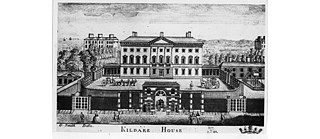Traces in Dublin
Richard Castle, architect from Kassel

His name holds a clue to his profession: Richard Castle, born in Kassel, Germany, was an architect. While he built few castles, he designed many landmark buildings in Dublin.
Not much is known about Castle’s early years. It is thought that he was born around 1690 in Kassel. According to the Dictionary of Irish Architects 1720–1940, his father was an English Jew named Joseph Riccardo who was appointed Director of Munitions and Mines to Augustus the Strong, Elector of Saxony and King of Poland, in 1699. Born David Riccardo, he changed his name to Richard Cassels, and later to Richard Castle, for reasons as yet unknown. Others claim that Cassels‘ parents were descended from the French-Netherlandish Du Ry family. According to those sources, Cassels and Simon du Ruy, who designed Schloss Wilhelmshöhe in Kassel, would have been cousins. By 1725, Cassels‘ movements had taken him to England, where he was looking at waterworks and architecture. Three years later, he was brought to Ireland by Gustavus Hume, who commissioned him to design Castle Hume on Lough Erne in County Fermanagh.
After that, Irish star architect Edward Lovett Pearce employed him as a draughtsman to work on the new Parliament House in Dublin and on the Newry Canal. Lovett Pearce died prematurely in 1733 but Cassels took over responsibility for some of his projects and changed his name to Castle. His legacy includes several stately homes in the country, and, in Dublin itself, Leinster House, Tyrone House and the Rotunda Hospital, the first maternity hospital in Europe. Richard Castle died on 19 February 1751 and is buried in Maynooth, County Kildare.
Visitor Information:
Visiting Leinster House
The Houses of the Oireachtas are situated at Leinster House. Therefore visits of Leinster House are restricted. More information available on the website of the Houses of the Oireachtas.
Leinster House
Kildare Street
Dublin 2
IRELAND
„German Traces in Ireland“ is a project of the Goethe-Institut Irland